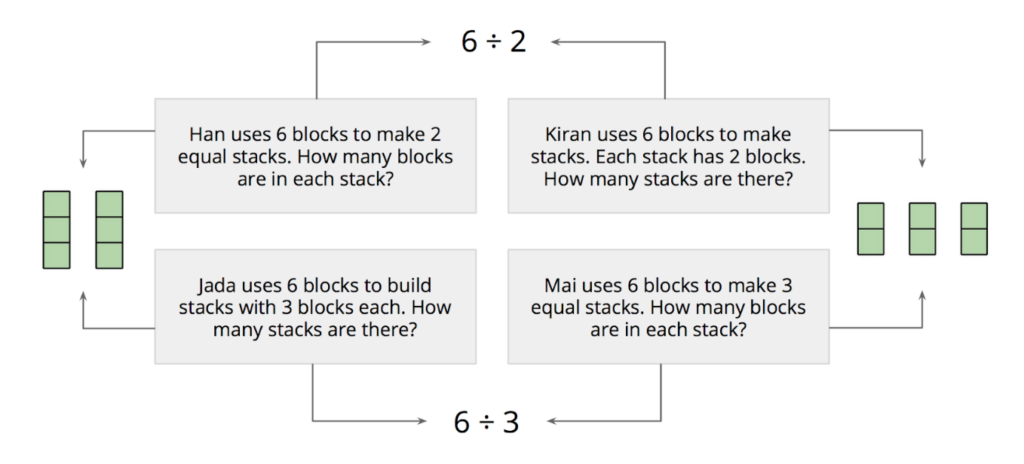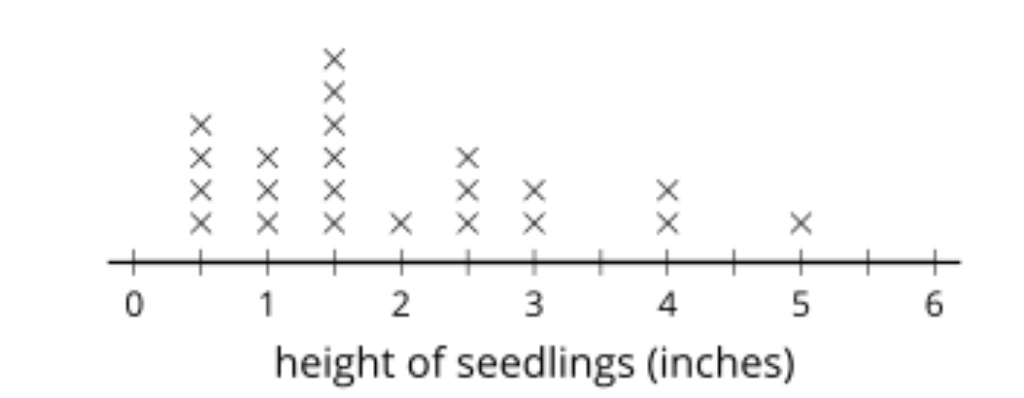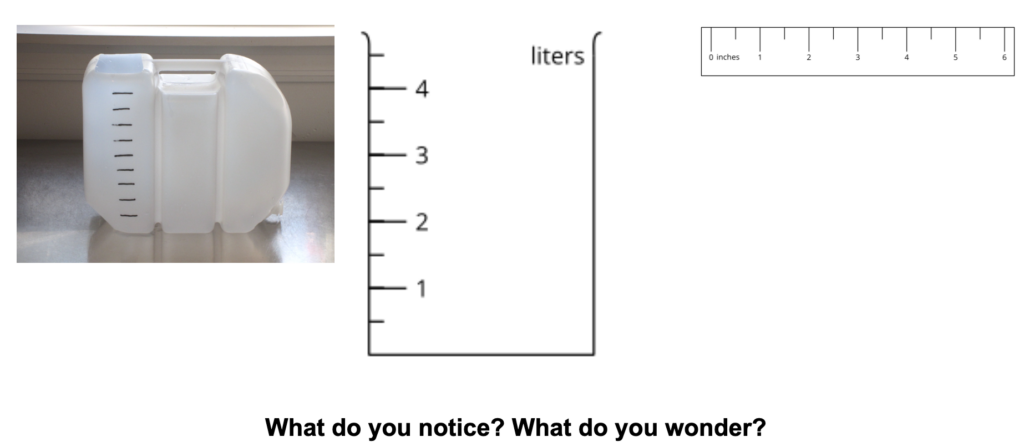By Mike Henderson
As a former grade 3 teacher, I know first hand how daunting teaching math at this level can be. On top of developing fluency with addition and subtraction within 1,000, students need to learn about new topics like multiplication, division, and fractions—topics that may feel big and challenging. To add to the stress, grade 3 is often the first year with end-of-year, high stakes standardized testing. Pressure can build up for both teachers and their students and create a vicious cycle where teachers may look for gaps to close rather than look for the brilliance all students bring into the classroom.
When planning the story of grade 3 math, we had a goal of intentionally disrupting this cycle by:
- ensuring that all students experience the “new” topics of multiplication, division, and fractions as clearly connected to what they already know
- ensuring that all students are given time to develop deep conceptual understanding of multiplication and division, build fluency from this understanding, and have ample opportunities to apply their understanding in a variety of contexts throughout the year
In order to reach these goals, we wrote a math story that builds students’ conceptual understanding of multiplication at the very beginning of the school year.
The invitation to grade 3 math
Much like the early units in Grades K–2, Unit 1 in grade 3 begins by inviting students and their teachers to learn more about one another by asking questions, collecting data, and organizing the data with graphs. As students learn more about each other, their interests, and the different ways they do math, they build the foundations of their math community.
The scaled picture and bar graphs also provide a natural opportunity to think about ways to group and count objects other than by counting by 1. This is an extension of students’ work in grade 2 with skip-counting by 2, 5, and 10. The activities help students connect their understanding of different ways to group or count objects to build a conceptual understanding of multiplication. Rather than present multiplication as something new, the activities provide opportunities for students to see multiplication as a new way of thinking about math they’ve done before.
Students make sense of different ways to represent equal groups. The group sizes are intentionally 2, 5, and 10 throughout this unit to continue to build on students’ strengths and allow them to focus on sense making rather than on calculation. They are introduced to different representations they may use throughout the year to represent their thinking, including equal groups drawings, tape diagrams, arrays, and expressions.

IM K–5 Math: Grade 3 Unit 1 Lesson 9 Activity 1 and Lesson 10 Activity 1
To learn more about how the work with arrays in Unit 1 builds coherence with students work from grade 2, check out Fluency Development Within and Across the Grades in IM K–5 Math™, part 3: Multiplication and Division.
In Unit 2, “Area and Multiplication,” students deepen their conceptual understanding of multiplication through the study of area. Area concepts are introduced early on in the story of grade 3 because they build on the geometry, measurement, and multiplication foundations from K–2. As early as kindergarten, students learned that they can build a shape by putting together other shapes and can make new shapes by decomposing a given shape. In grade 2, students partitioned rectangles into equal-size squares. So, although defining area and measuring area are new, area concepts build on what students already know, and the activities in Unit 2 intentionally help make these connections.
Students use unit squares to measure the area of rectangles and relate the structure of gridded rectangles to the structure of arrays. They begin to find the value of products that include group sizes other than 2, 5, and 10. As they progress from gridded rectangles to rectangles with only the sides labeled, they make sense of the area diagram that will be used in later units.
6 x 3 = 18
 IM K–5 Math: Grade 3 Unit 2 Narrative
IM K–5 Math: Grade 3 Unit 2 Narrative
By the end of Unit 2, students have developed a stronger conceptual understanding of multiplication. They have engaged in sense-making about representations that they will use throughout the course. This conceptual foundation allows students to build fluency with multiplication and division throughout the year. For more, check out By the End of Grade 3: Developing Fluency with Multiplication by Grade 3 Lead Writer Zack Hill and Fluency Development Within and Across the Grades in IM K–5 Math™, part 3: Multiplication and Division by 2–5 Lead Writer Dionne Aminata and Grade 5 Lead Writer Sarah Caban.
Building on foundations
Addition and subtraction
In Unit 3, the focus shifts to “Wrapping Up Addition and Subtraction Within 1,000,” as well as rounding within 1,000. The unit is placed here, rather than at the beginning of the year, for a few reasons. First, we want students and their teachers to make sense of multiplication in accessible ways as early as possible to give time to build fluency across the year. If addition and subtraction were the beginning of the story, we worry that any unfinished learning students have from K–2 may result in decisions that delay students’ opportunities to engage with grade-level work.
Second, the work of Unit 3 allows students to revisit addition and subtraction with familiar base-ten representations. This focus on place value allows teachers to identify student strengths that can be used as they begin to multiply and divide with larger factors and dividends in later units, including multiples of 10. Unit 3 also revisits the number line as students think about rounding to the nearest multiple of 10 and 100 before they use the number line to make sense of fractions as numbers in Unit 5.
Last, the work of Unit 3 includes early opportunities for students to make sense of two-step word problems that include addition, subtraction, or multiplication. Students will continue to have opportunities to build their fluency with addition and subtraction throughout the year in warm-ups, centers, and their work with measurement in Unit 6.
Making sense of division
In Unit 4, students build on their conceptual understanding of multiplication to make sense of division. They connect division to multiplication with an unknown factor to make sense of and solve “how many in each group” and “how many groups” situations.
 IM K–5 Math: Grade 3 Unit 4 Section A Narrative
IM K–5 Math: Grade 3 Unit 4 Section A Narrative
Students also build on work with area and area diagrams to use the distributive property to decompose factors to make it easier to find the value of products.

IM K–5 Math: Grade 3 Unit 4 Section C Narrative
Fractions
Unit 5 is called “Fractions as Numbers.” In grades K–2, students learned about composing and decomposing shapes from equal-size pieces. They learned names of these equal-size pieces—halves and fourths—in grade 1 and thirds in grade 2. Now, in grade 3, students learn that they are not simply names of equal-size pieces or parts of shapes, but are numbers. Students partition fraction strips and rectangles as they deepen their understanding of fractions and fraction notation. Later they use the number line to locate fractions and compare fractions with the same numerator or denominator.

IM K–5 Math: Grade 3 Unit 5 Narrative
Consolidating learning with four operations
In Units 6 and 7 students apply learning from previous units, and make connections within and across mathematical concepts.
In Unit 6, “Measuring Length, Time, Liquid Volume, and Weight,” students connect fractions to measurement. They make connections between whole numbers and fractions on number lines and measurement tools. This builds a foundation for work with addition and subtraction of fractions and fraction equivalence in grade 4.

IM K–5 Math: Grade 3 Unit 6 Lesson 4 Activity 1

IM K–5 Math: Grade 3 Unit 6 Lesson 8 Activity 2
The unit also provides opportunities for students to continue developing fluency with addition and subtraction within 1,000 as they solve problems involving time and measurement. They have new opportunities to work with one and two-step problems that involve all four operations.
 A lemonade stand at the fair makes 132 liters of lemonade a day. When Clare and Tyler stopped by the stand, there were 90 liters left.
A lemonade stand at the fair makes 132 liters of lemonade a day. When Clare and Tyler stopped by the stand, there were 90 liters left.
At the end of the day, there were 56 liters of lemonade left, which the vendor put on sale in 4-liter jugs.
IM K–5 Math: Grade 3 Unit 6 Lesson 14 Activity 2
Although the overall focus of Unit 7, “Two Dimensional Shapes and Perimeter,” is on geometry, students also revisit area and apply understandings about the four operations as they solve problems with area and perimeter. Unit 8, “Putting It Together,” includes additional opportunities for students to practice their fluency with multiplication and division within 100.
Next Steps
From the very beginning, the story of grade 3 works to use the coherence in the standards to ensure that students do not see multiplication, division, and fractions as brand-new concepts, but as natural extensions of what they already know about math. We position topics that were a major focus in K–2—addition, subtraction, and place value—so that it supports the major work of grade 3, rather than derail it. How do these choices help give all students opportunities to access grade-level work throughout the year? How do they help students make meaningful connections to the math they already know and understand?
Check out the entire Stories of Grades K–5 blog post series:
Story of Kindergarten
Story of Grade 1
Story of Grade 2
Story of Grade 3
Story of Grade 4
Story of Grade 5
You can also download IM’s Stories of Grades K–5 free ebook!
